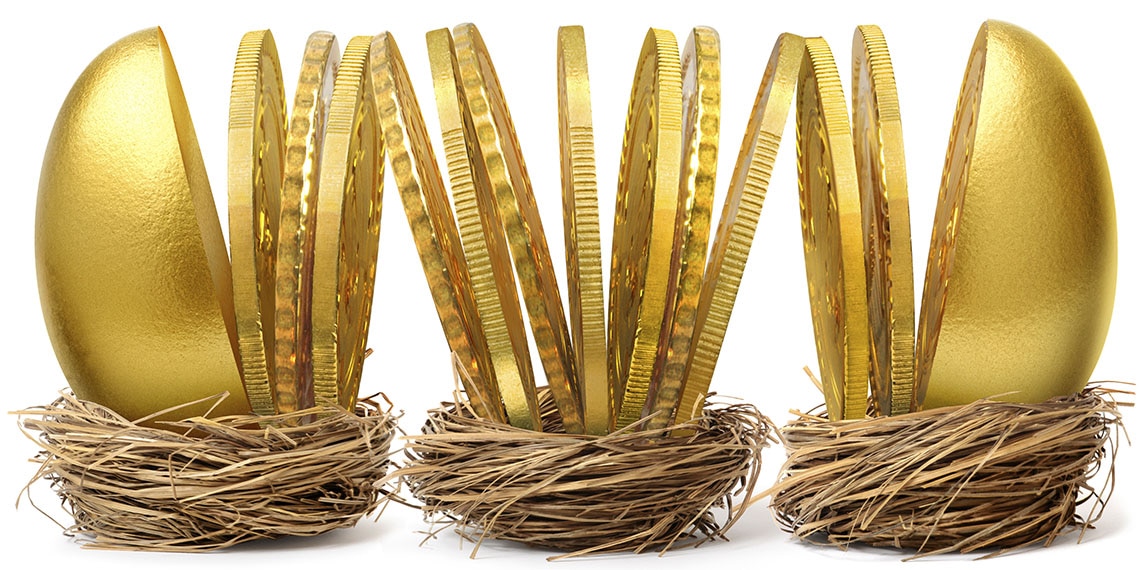
You’ve saved for years to prepare for retirement. Now that it’s arrived, it’s time to start tapping your nest egg—even if you might not need it right away.
What is an RMD?
RMDs are “required minimum distributions” from traditional IRAs or employer-sponsored retirement accounts. IRS rules state you must begin taking your required minimum distributions (RMDs) from these types of retirement accounts when you reach age 72. If you don’t, you risk incurring a 50% excise tax on the amount not distributed. That stings.
How to withdraw your RMD
A good way to ensure you’re following RMD requirements is to set up automatic withdrawals to avoid potential consequences. The deadline for your first RMD is typically April 1st the year you turn 72 and December 31st each year thereafter.
But keep in mind that Uncle Sam doesn’t care what you do with your RMD. You can allocate it for living expenses, start a new savings account, invest in the market, or give the money away to your family or a worthy cause. The options are unlimited once you withdraw the funds from your retirement account.
If you need to take RMDs or will soon, start by working up a projected budget. That way you can decide what portion of your RMD, if any, you’ll need for life in retirement. Review all expected income streams you have or plan to have, such as pensions, part- or full-time work, and annuities. Many people overestimate their Social Security benefits, so consider using a calculator to more accurately plan for payments.
Watch out for expenses that may cost more than you’re expecting in retirement. According to The Wall Street Journal, the most commonly overlooked areas of potentially greater expense are helping family financially, healthcare costs, entertainment, long-term care and longevity.
And don’t forget the tax man! Unless you’ve invested in a Roth IRA, from which you withdraw tax-free, you’ll need to pay taxes on your RMD, so be sure to figure any tax payments into the calculation.
Next, figure out what you’ll do with the portion of your RMD you don’t need for expenses. Here are a few options to avoid fees, while preparing for a long and prosperous retirement.
1
Put it towards living expenses. It seems obvious but this could be the best use of your RMD if that’s what you can afford. Here are some of the basic expenses to consider when creating a budget.
2
Pay down debt. Using your RMD for some big-ticket items—such as paying off a home equity line of credit, a large medical bill, or a student loan—may actually save you money, because you can avoid withdrawing proceeds that would incur additional taxes, such as investment gains, to pay for those things. While you’re at it, use your withdrawal to create a rainy day fund, if you don’t already have one.
3
Save it. If you don’t need the funds for necessities, put the money back to work for you by either saving it in a high yield savings account or CD. Interest rates are up this year, so these are good options if you have a low risk tolerance and don’t mind slower growth (unlike the higher potential and risk associated with more aggressive investments).
4
Reinvest it. Invest in stocks or bonds that are appropriate for your risk tolerance and tax bracket. Buying municipal bonds or bond funds, for example, will set you up for additional income that is generally free from federal income tax and, in some cases, state and local tax. Exchange-traded funds (ETFs) are also a tax-efficient way of growing your nest egg further, as you’ll delay paying capital gains. Also look for stocks that pay qualified dividends, as those are taxed at the lower capital gains rate as opposed to ordinary income rates.
5
Convert it into a Roth IRA. Roth IRAs have no RMDs. You’ll have to pay taxes on the amount that is rolled over from a traditional IRA, and if you’re already 72 or 70 ½ you must take the RMD before converting. This is only an option if you’re converting from a Roth 401(k) or traditional IRA.
6
Give it away. If you’ve been thinking about making a charitable contribution and have an RMD to take, consider killing two birds with one stone by giving your RMD to a cause you care about. With a tool known as a qualified charitable distribution (QCD), you can transfer up to $100,000 each year directly to an eligible charity. (Keep in mind that this works only for IRA withdrawals and not for employer-sponsored plans, such as 401(k)s.)
7
Pass it on. Give your adult children a reason to appreciate you by gifting your RMD to a 529 college savings plan for one or more of your grandchildren. In a 529 account, the money will grow tax-free and withdrawals are tax free as long as they go towards education expenses. You’ll still have to pay income taxes on the RMD.
8
Treat yourself. If your basic expenses are met and debt has been paid down, you’ve earned a splurge. Plan a vacation to an exotic place you’ve never been, buy the convertible you’ve always wanted or invest in a beautiful piece of art you’ve long admired. If you feel like you can’t afford your big dreams, you can still create a savings plan. Now that you have a well-thought-out financial plan, you can finally spend on your most valuable asset—you.
C.J. Prince is a freelance writer who covers finance, business strategy and leadership. Her work has been published in Working Mother, Entrepreneur and New Jersey Monthly, as well as many financial websites and magazines.
Start saving your RMD—see today’s rates and open a Riverstones Vista Capital CD online.

